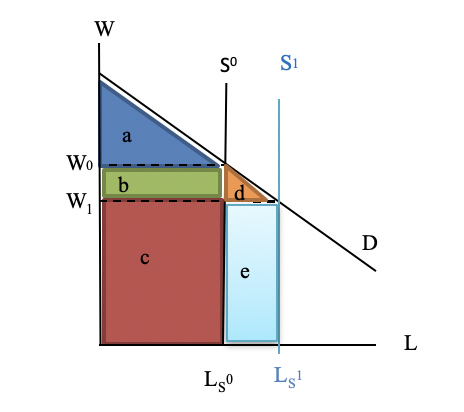
Immigration Is Helping Shield Canada From Global Slowdown
Post by Svetlin Sabev. Colgate Class of 2021. “Immigration Is Helping Shield Canada From Global Slowdown,” Wall Street Journal, March 1, 2020.
The article focuses on the importance of immigration for the continued growth of Canada’s economy. There are two main ways to spur economic growth over the long term: an expanding workforce and advances in productivity. The articles points out that immigration flows into Canada in recent years have actually helped contribute to both factors of growth, resulting in Canada’s ability to continue to expand despite looming risks from an uncertain global future due to trade tensions and a Chinese slowdown.
The article cites that Canada’s labor force grew by 2% in 2019, faster than other advanced countries such as the U.S. and Japan. More importantly, 80% of this growth came from immigration. Furthermore this is not a recent phenomenon. Canada has experienced relatively high population growth since the early 2000’s, further quickening after the Trudeau government bumped immigrations levels since 2017, reaching 1.4% in 2018 – the fastest amount in the top 7 economies in the world. To see how this influx has helped the Canadian economy we can turn to the Neoclassical Model introduced in class (see figure below). Assuming a perfectly inelastic supply, a significant increase in immigrants as seen in Canada, causes supply to shift to the right. While the shift has negative effects on current labor welfare, firm welfare, destination welfare, and immigration welfare all show significant positive increases. As expected based on the model, Canada’s economy has expanded by 1.5% in 2019 – second place in the G7. This growth is solely due to labor market dynamics. A growing population has supported increased levels in consumer spending and rebound in housing prices across markets in Canada. Bank of Nova economist Derek Holt suggests that Canada immigration policy has provided economic stimulus that is comparable to an interest-rate cut of between a quarter percentage point and a half. All together, increased destination welfare, increased consumer spending, and a rebound in housing markets has allowed the Canadian government to shield itself from global slowdown.
Moreover, Canada’s point-based immigration platform has also contributed to the country’s economic growth. Roughly 60% of immigrants who are admitted into the country are selected based on a points system that gives preference to immigrants with skills applicable in finding employment opportunities. As discussed in class, points systems can decrease the pull effect and potentially decrease inflows. However, due to the Trudeau government’s commitment to immigration, flows have continued to rise. The point-system, however, has bolstered productivity gains as it puts more focus on finding immigrants who have the potential to increase productivity due to their desirable skill sets. This productivity growth has also been a central driver in boosting economic activity.
Overall, the article cites several important factors for how Canada has managed to boost its economy by increasing immigration flows and putting emphasis on immigrants who can contribute right away.
